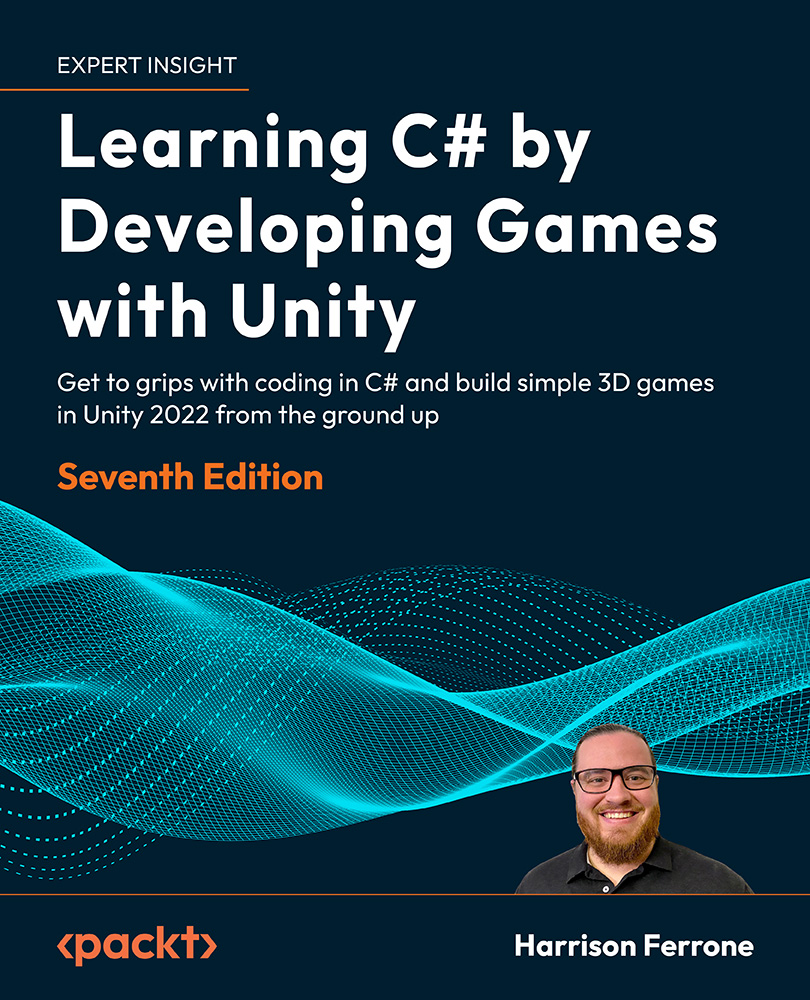Summary
This wraps up your first experience of creating independent gameplay behaviors and tying them all together into a cohesive, albeit simple, game prototype. You’ve used vectors and basic vector math to determine positions and angles in a 3D space, and you’re familiar with player input and the two main methods of moving and rotating GameObjects. You’ve even gone down into the bowels of the Unity physics system to get comfortable with Rigidbody physics, collisions, triggers, and event notifications. All in all, Hero Born is off to a great start.
In the next chapter, we’ll start tackling more game mechanics, including jumping, dashing, shooting projectiles, and interacting with parts of the environment. This will give you more hands-on experience in using force with Rigidbody components, gathering player input, and executing logic.


























































